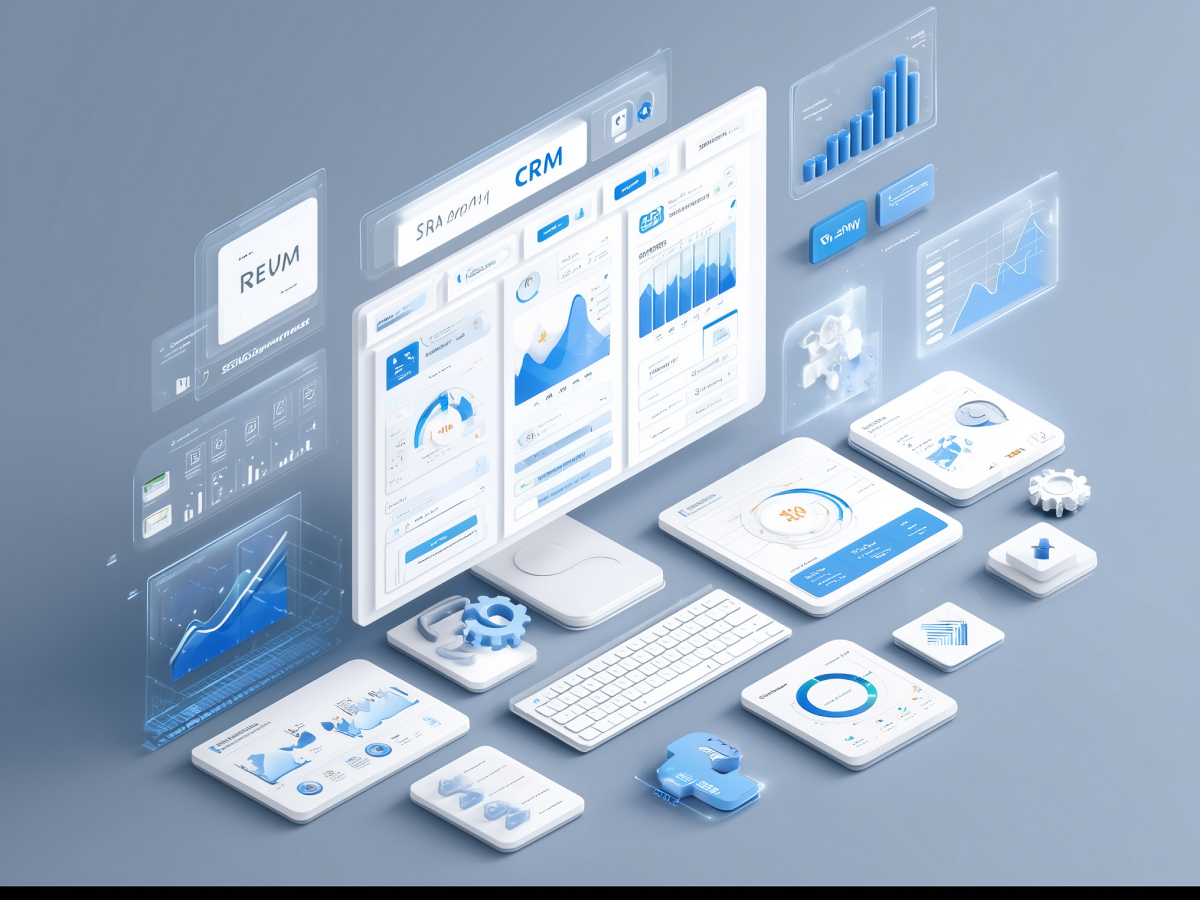A significant portion of organizations have been affected by AI data poisoning attacks
AI data poisoning is happening now, and it’s targeting organizations across sectors. 26% of organizations in the UK and US reported experiencing AI data poisoning in the past year, according to the IO State of Information Security Report. That’s not a small number. If your systems rely on machine learning, you’re already a potential target. What makes this threat so dangerous is its quiet nature. Attackers manipulate the data that trains your AI models. This compromises how your systems think and act, sometimes without anyone noticing, until outcomes start going wrong.
These attacks go after the heart of what makes AI useful: pattern recognition and automated decision-making. By tainting the training data, attackers introduce vulnerabilities that aren’t obvious in the code. They can embed backdoors, hidden ways to re-enter your systems, and subtly disrupt core functions like fraud detection or cybersecurity protocols. Performance drops. Recommendations skew. Defenses weaken. Your AI becomes someone else’s tool.
Business leaders need to treat AI data integrity the same way they treat financial reporting, critical, monitored, and fail-proof. Hoping attacks won’t happen is reckless. AI systems don’t just need firewalls; they need supervised training data supply chains, regular auditing, and internal red team testing.
Chris Newton-Smith, CEO of IO, made it clear: rapid AI adoption, without guardrails, has created a wave of predictable problems. Many organizations moved fast to gain AI advantage but left their systems wide open. A strong governance model isn’t a formality, it’s a shield.
Deepfake-related incidents and AI-driven impersonation are emerging as prevalent risks
We’re seeing deepfakes becoming real-world problems at surprising speed. In the IO report, 20% of organizations said they faced deepfake or cloning incidents in just the last year. These aren’t experimental use cases, they’re being used right now to attack reputation, finances, and internal decision-making workflows. And with 28% of respondents flagging deepfake impersonation during virtual meetings as a growing risk over the next year, it’s clear the attack surface is expanding.
In practice, it’s simple. Someone uses AI to clone a voice or face, logs into a meeting, pretends to be a colleague or executive, and manipulates the outcome. It’s not science fiction. It’s low-cost, scalable, and hard to detect without dedicated systems in place. If your team doesn’t know this is possible, or lacks proper authentication protocols, it’s easy to fall for.
In a distributed environment where virtual meetings are now the norm, these attacks have more entry points than ever. That’s a security gap. Companies need active detection systems, automated verification workflows, and, just as important, employee awareness. Cybersecurity isn’t only a backend issue; it’s increasingly happening in the frontend, where content and people interact.
This is another reason proactive governance is essential. Waiting until after an attack is a guaranteed way to lose valuable time, trust, or capital. The threat has already evolved. Organizations need to keep pace.
AI-generated misinformation and phishing attacks are intensifying and endangering organizational security and reputation
We’re seeing a rapid rise in threats driven by generative AI, particularly misinformation and phishing. 42% of cybersecurity professionals surveyed in the IO report say AI-generated misinformation is now a top risk to fraud prevention and brand reputation. Another 38% identify AI-enhanced phishing as a significant and growing concern. The message is clear: traditional tools are no longer enough.
Attackers are using AI to automate and scale deception. Misinformation campaigns are more convincing, more targeted, and harder to track. Phishing messages, now written by generative AI, often appear more credible than those written by humans. These aren’t mistakes you can easily spot. They sound coherent. They feel authentic. And they’re well-timed.
The bigger issue is that existing defenses, like basic email filters or manual content reviews, weren’t built for this. Cyber teams are overwhelmed not because the attacks are complex, but because they’re constant and automated. You end up wasting critical time chasing false positives while the threats evolve underneath you.
For the C-suite, the takeaway is simple: AI creates scale. That’s true for attackers, too. You need tooling that understands content, context, and behavior, not just flagged keywords. And you need operational awareness. Leadership teams must ensure everyone, not just IT, grasps the evolving threat model. Executive impersonation via email, employee manipulation through fake internal memos, deepfake videos tied to executive statements, these are all in circulation now.
General awareness isn’t enough anymore. Every business should be running simulations, testing detection models, and empowering internal teams to identify misinformation before it spreads. Organizations that wait for regulators or external alerts to respond are already behind.
Unauthorized AI usage, known as “shadow AI,” is creating internal vulnerabilities
Shadow AI is exactly what it sounds like, employees using AI tools without company approval, policy, or oversight. According to the IO report, 37% of organizations confirmed that their employees are using unapproved AI systems on the job. Another 40% expressed concern about AI tools making autonomous decisions without compliance or quality checks.
This growing issue is driven largely by convenience. Public AI tools are accessible, fast, and often better than internal systems. So people adopt them, often with good intentions. But that doesn’t reduce the risk. When AI tools process company data without approved controls, you introduce unnecessary exposure. Sensitive input, unpredictable output, and no audit trail, all in your production environment.
Most businesses didn’t prepare for this because AI wasn’t originally treated as an enterprise platform. But the truth is, any AI system that pulls from proprietary info or generates external communication is now part of your company’s operational footprint. If it’s invisible to your compliance teams, it’s a liability.
Leaders need to take control of this. Banning AI outright doesn’t work, it pushes it further underground. The smarter approach is to set clear boundaries: define which tools are approved, create workflows for safe usage, and require visibility into AI-driven outputs. AI usage should be traceable and aligned with your internal data, security, and legal standards.
Security isn’t just about firewalls and encryption anymore. It’s about knowing what technologies your teams interact with every day, and making sure those tools serve your business, not compromise it.
Rapid and uncontrolled AI deployment has outpaced regulatory controls, complicating security efforts
Too many organizations adopted AI quickly without first building the governance needed to support it. They moved fast, often to stay ahead of competitors, but underestimated the complexity of securing what they deployed. According to the IO State of Information Security Report, 54% of companies admit they rolled out AI tools too rapidly. Now they’re struggling to scale back or apply security controls after the fact.
Security complexity has grown fast. In just one year, the number of organizations listing artificial intelligence and machine learning as a top security challenge increased from 9% to 39%. Over half say that AI is actively getting in the way of their broader security efforts. That’s a clear signal that the current approach is broken: you don’t fix operational risk by layering AI on top of unresolved gaps.
Many of these challenges stem from early decisions, like integrating public APIs with sensitive workflows or failing to sandbox systems during training. The underlying problem is simple compliance friction. When AI systems operate without visibility, especially those making automated decisions based on dynamic inputs, they’re difficult to govern, and even harder to secure.
Executives need to step in with structure. That means auditing where AI is already embedded, reviewing how it’s trained, and shifting AI development out of experimentation mode and into accountable, risk-managed structures. Too often, teams optimize for speed, not durability. That doesn’t scale.
Chris Newton-Smith, CEO of IO, points out that organizations mistook speed for strategy. Technical capability outpaced governance, and now many are paying the price. This situation isn’t irreversible. But it requires companies to be honest about where they are and act swiftly to close the gap.
Organizations are increasingly investing in AI-based security measures and governance frameworks
Despite the risks, adoption of AI in cybersecurity is accelerating, and for good reason. Defensive AI, when implemented correctly, can outperform legacy systems and improve the precision of threat detection. In the past year alone, AI, machine learning, or blockchain have been implemented into security frameworks at 79% of surveyed organizations in the UK and US, up from just 27%. That’s a meaningful increase.
The intention is clear. Organizations are investing heavily to push beyond current limitations. 96% plan to deploy generative AI-powered threat detection tools. 94% are targeting deepfake detection systems. And 95% are putting focus on AI governance frameworks, laying down boundaries, auditability, and policy alignment across their use of intelligent systems.
These decisions signal maturity. Instead of blocking AI, companies are restructuring their approach to guide its development. What’s important here is that governance isn’t slowing innovation, it’s making it sustainable. Uncontrolled use was the first wave. What comes next is clarity, policy, and intentional design.
The UK’s National Cyber Security Centre already issued a warning: AI will likely increase attack effectiveness over the next two years. Now is the window to act. Frameworks like ISO 42001 offer a real pathway for integrating responsible AI into enterprise workflows. They set a baseline for transparency, risk mitigation, and operational resiliency.
Chris Newton-Smith has been clear about this as well: resilience isn’t about resisting change, it’s about implementing the right systems so companies can respond fast, recover faster, and make defensible decisions when systems are under stress. The cost of inaction compounds. But the companies that get this right will have a measurable edge, not only in security, but trust.
Government cybersecurity agencies predict that AI will enhance the effectiveness of cyberattacks
The trajectory is clear: cyberattacks are becoming more effective through the use of AI. This isn’t speculation, it’s warned by national security experts. The UK’s National Cyber Security Centre has stated that AI will almost certainly increase the impact and precision of digital threats over the next two years. As generative AI becomes more efficient, the skill and resource gap that once separated amateur hackers from advanced threat actors continues to shrink.
That shift matters. Attackers are already leveraging AI to automate vulnerability discovery, bypass detections, clone identities, and manipulate messaging. These tools now democratize complex exploits, making them faster to build, harder to defend against, and adaptable in real time. The attack surface won’t just grow, it will become more dynamic. This puts traditional defense strategies under pressure.
Businesses that continue to treat cybersecurity as a fixed, reactionary process will fall behind. The scope of threat evolution demands strategic foresight built into security operations. That includes replacing reactive security stacks with AI-enhanced detection, deploying deception systems that dynamically respond to threats, and actively stress-testing internal controls against AI-driven attack methods.
For executives, this is an inflection point. Investment in cybersecurity can no longer be limited to patching known vulnerabilities. It must include the predictive capabilities to model where future attacks may emerge, and take steps now to blunt their impact. That means aligning with best-practice frameworks, maintaining attack readiness, and building transparent, well-defined AI governance frameworks that span product, infrastructure, and compliance.
Chris Newton-Smith, CEO of IO, highlighted how frameworks like ISO 42001 provide companies with a practical path forward, enabling innovation without sacrificing resilience. The ability to consistently recover, communicate, and safeguard operations in the face of intelligent threats will be a competitive advantage for those that act early. It’s not enough to know AI is changing cybersecurity. Leaders need to be the ones shaping how it’s secured.
Recap
AI isn’t slowing down, and neither are the threats tied to it. What used to be fringe risks, data poisoning, deepfakes, shadow usage, are now showing up inside core systems and decision workflows. One in four organizations have already experienced AI data poisoning. That’s not just a technical issue. That’s operational exposure, brand vulnerability, and board-level risk.
If you’re leading a business that’s actively using or planning to deploy AI, the message is simple: move forward, but don’t move blindly. Governance needs to be built in from the start. Define what AI tools are in use, who controls them, and how their outputs are verified. Modern security isn’t just about networks and firewalls, it’s about securing intelligence.
This is not about slowing innovation. It’s about owning it. The organizations ahead of this are the ones integrating structured AI governance, investing in detection systems, and training their teams to adapt in real time. Waiting until something breaks isn’t strategy, it’s damage control.
The fundamentals haven’t changed: resilience, speed, clarity. If AI is shaping your future, then security has to be shaping how you build with it. Your risk surface has evolved. Your leadership approach needs to evolve with it.





